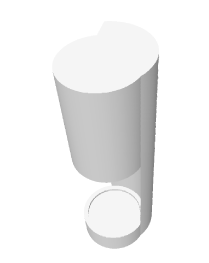COFFEE MAKER DESIGN AND SHAPE GRAMMAR

A shape grammar is a formal way of describing a design space by defining rules about how simple shapes can be manipulated and built into more complex shapes. Shape grammars have an analogy to language grammars: a language is defined by basic vocabulary and rules about how to put the vocabulary together in meaningful ways. By using the grammar structure, one can create new sentences and describe new ideas. In the same way, a shape grammar can be used to create new shape designs. Shape labels can also be used to define design functions.
Shape grammars have been applied successfully in the field of architecture. This research is intended to show that shape grammars can be extended to product design. A shape grammar can be used to provide designers with a tool for exploring the design space of a product while ensuring that all designs are valid designs. The grammar can be used to provide insight to understanding aesthetic qualities of designs and corporate image. Potentially, the grammar can be integrated with an artificial intelligence algorithm to generate objective based designs while considering issues such as cost, space, and aesthetic qualities.
Many consumer products classes have a very simple functional breakdown that is similar across all products in the class. For example, coffee makers are all functionally similar: each brand differs only by features and aesthetics. This research is a Java implementation of a shape grammar written by Manish Agarwal and Jon Cagan to describe a large design space of coffee makers. The grammar has been used to generate coffee makers currently on the market as well as novel designs. The grammar is currently in the process of being implemented.
|

